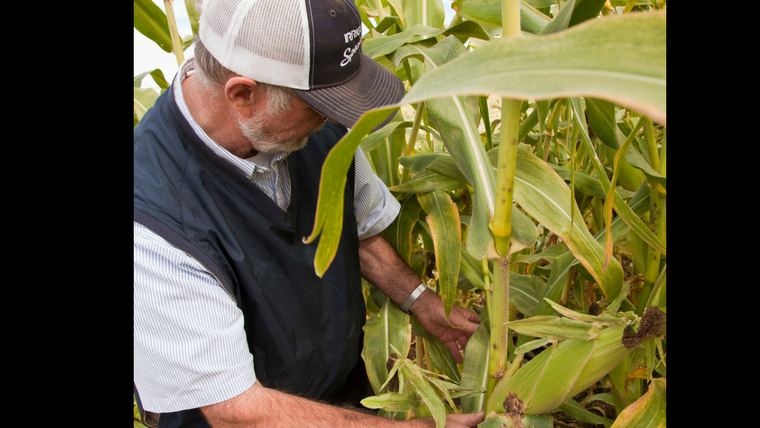3 tips for scouting your crops for disease

When scouting for crop diseases, it's essential to get into the field and put your hands on the plants. "Windshield scouting" is not an effective method.
When scouting for disease in your crops, it is important to remember that sometimes the cause of the symptoms is not obvious. Diseases can be caused by a variety of factors, such as environmental stressors, reactions to various fertilizers or herbicides, nutritional deficiencies or soil problems. Therefore, it can be difficult to pinpoint the cause of the disease and determine an appropriate treatment.
When scouting your crops for disease, pay particular attention to these three plant parts:
1. Examine the roots
“Windshield scouting” while driving the fields doesn’t work because disease is not always easily visible to the human eye. To ensure you are catching any sign of disease before it progresses, it is important to get into the field and dig up a few plants to examine the roots. Look for unhealthy roots that may have lesions. To get a better look, try washing the roots with water and then cutting them up the middle to examine for any sign of internal infection.
2. Examine the leaves
Especially during flowering, make sure to look at the leaves and sheaths on each plant. Pay attention to lesions, which will help you determine the amount of leaf infection.
3. Examine the stem and heads
When examining the stems, heads and pods of plants, be sure to split them apart for a closer look at the inside, observing any discoloration that could be caused by fungi or bacteria. Also, check the outside of the stems, heads and pods of the plants for signs of fungal material or lesions.
Scouting for disease is critical to ensure early intervention. Samples should be taken of all suspect crops and submitted to a trusted lab, such as Quantum Genetix, that can test for disease.
















